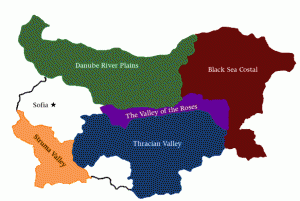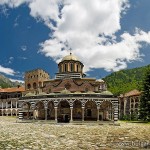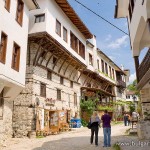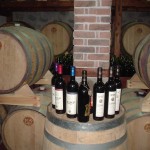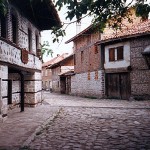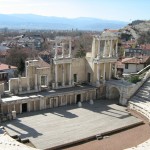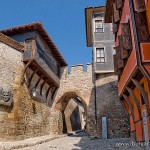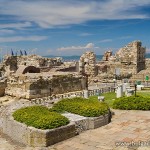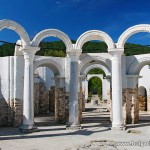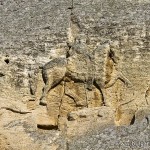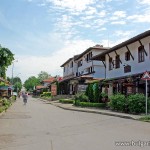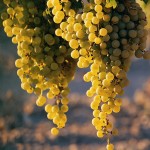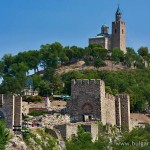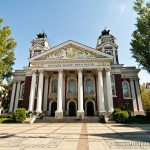Bulgarian Wine Regions
Bulgaria is famous worldwide with it’s wines. The wine traditions here are dating since 5th century BC from the thracian period. Here it was a cult and drink of the Gods. Bulgaria is the land of the God of wine Dionysus and mythical musician Orpheus.
This tour will give you the opportunity to taste different sorts of wine from all Bulgarian regions.
Itinerary
Day-1
Arrival at Sofia airport. Transfer to the hotel in the city of Blagoevgrad. Overnight.
Day-2
Breakfast. Visit at the Rila monastery- the biggest in Bulgaria. Transfer to Damyanitza for some wine tasting. Melnik tour and wine tasting. Overnight in Melnik
Struma Valley Region (South Western Region). This Bulgarian region includes the southwestern parts of the country. It is not large in size, but it possesses some specific climatic features, which are very similar to the Mediterranean regions. Along the valley of the Struma river, a unique Bulgarian varietal “Broad Leaved Vine of Melnik” (Shiroka Melnishka) is cultivated for the production of dry and semi-dry red wines. Cabernet Sauvignon, Merlot and Pamid varietals are also grown in the area. The local wines are characterized by full taste, with spicy southern tones
Rila Monastery was founded in the 10th century by St John of Rila, a hermit canonized by the Orthodox Church. His ascetic dwelling and tomb became a holy site and were transformed into a monastic complex, which played an important role in the spiritual and social life of medieval Bulgaria. Destroyed by fire at the beginning of the 19th century, the complex was rebuilt between 1834 and 1862. A characteristic example of the Bulgarian Renaissance (18th–19th centuries), the monument symbolizes the awareness of a Slavic cultural identity, during the centuries of Otoman occupation.
The first written evidences for the Melnik Fortress refer to the beginning of the 11th century. The earliest settlers on the territory of contemporary Melnik were the Thracians, and more particularly the
Thracian tribe Maedi, of which the legendary rebel Spartacus originated. A few centuries later the Romans lived on this ground. This is proved by the ancient Roman bridge, which is still preserved in the town of Melnik.
Day-3
Breakfast. Wine tasting in Harsovo. Tour of Bansko, which is the biggest winter ski resort in Bulgaria. Wine tasting in Brestovitsa. Overnight in Plovdiv.
Bansko gradually established itself as one of the leading winter ski resorts in the country and the region, which attracts many Bulgarian and foreign tourists. There are multiple museums and landmarks in the town. 130 architectural and historical monuments of the culture are registered, seven of which are of national significance. The architecture of the typical houses in Bansko from the period of Revival (18th – 19th century) can be seen in the rest of the museum complex on the territory of the town.
Day-4
Breakfast. Half day tour of Plovdiv. Transfer to Stambolovo. Wine tasting. Transfer to Mezek. Wine tasting and program in the region.. Overnight in Svilengrad.
Thracian Valley (Southern Region). It includes around 35% of the vineyard massifs and is characterized by a moderate continental climate and good distribution of precipitation during the vegetation period.
Plovidv is considered to be one of the oldest cities in Europe. Here you will see remains of a Thracian fortress (5th century BC) and well preserved
remains from the Roman times to our days.
The Old Town is a marvelous site, with it’s picturesque churches, the mosque and many houses with the architecture, the specific atmosphere and the spirit of Bulgarian Revival period.
Your guide will show you the fabulous remains from the Ancient Roman Empire – the Roman Stadium, the Roman Forum, the Amphitheater.
Day-5
Breakfast. Wine tasting in Mezek. Transfer to Pomorie. Wine tasting. Half day tour of Nessebar. Overnight.
Situated on a rocky peninsula on the Black Sea, the more than 3,000-year-old site of Nessebar was originally a Thracian settlement (Mesebria). At the beginning of the 6th century BC, the city became a Greek colony. The town’s remains, which date mostly from the Hellenistic period, include the acropolis, the temple of Apollo, an agora and a wall from the Thracian fortifications. Among other monuments, the Stara Mitropolia Basilica and the fortress date from the Middle Ages, when here was one of the most important Byzantine towns on the west coast of the Black Sea. The wooden houses, typical for the Black Sea architecture, are built in the 19th century.
Black Sea Coastal (Eastern Region). This region has around 30% of the vineyards and includes three sub-regions (Northern sea coast, Internal sub-region, South sea coast)
Day-6
Breakfast. Transfer to Preslav. This town excavations, date from the foundation of the Bulgarian kingdom. Wine tasting. Visit Madara Rider, which dates from the time of the Bulgarian Khans and is squared in the rock. Tour of Arbanasi. Overnight in Veliko Tarnovo
Preslav was known as a spiritual and literature center, where the development of the Slavic written language and the Golden Age of Bulgaria during the rule of Tsar Simeon I (who reigned in the period 893 – 927) took place.
The Madara Rider, representing the figure of a knight triumphing over a lion, is carved into a 100-m-high cliff near the village of Madara in northeast Bulgaria. Madara was the principal sacred place of the First
Bulgarian Empire before the conversion to Christianity in the 9th century. The inscriptions beside the sculpture tell of events that occurred between AD 705 and 801.
The village of Arbanasi is located on a high plateau 5 km from the city of
Veliko Tarnovo.
It is known, that the village existed during the time of the Second Bulgarian State (1185 – 1393). At that time the Bolyari (nobles) living in the capital Tarnovo, used it as a summer residence. According to the legend, the Tsar of Tarnovo minted coins here.
Day-7
Breakfast. Half day tour of Veliko Tarnovo – the Town of Tsars, where you can feel the spirit of the Bulgarian bolyars. Wine tasting in Lyaskovets. Wine tasting in Suhindol. Lyaskovets and Suhindol are one of the famous regions, which produce the famous Bulgarian red wine. Transfer to Sofia – the capital of Bulgaria, where you can feel the modern and the ancient city where Thracians have lived
thousands of years ago. Sofia is also famous for its mineral springs and the Ski resort Vitosha Mountain. Overnight.
Danube River Plains (Northern Region). This region has around 30% of the vineyards in the country and includes three sub-regions. (Eastern, Central, Western)
Veliko Tarnovo is one of the oldest towns in the country, as its history dates back to more than five thousand years ago, which is proven by the archaeological excavations.
The upsurge of Veliko Tarnovo is related to the period of the Second Bulgarian Empire (1185 – 1396). In 1185 the town was declared capital of the restored Bulgarian State by the brothers Asen and Petar, which marked the end of the Byzantine dominion, that continued for 167 years.
After its selection for a capital, the town developed fast, as within the period 12th – 14th century it was the most unconquerable Bulgarian fortress, as well as a cultural and intellectual center of Bulgaria and Balkan peninsula.
Day-8
Breakfast. Walking tour of Sofia. Free time. Overnight.
Sofia – panoramic tour on foot, during which you will see the main sights – Alexander Nevski Cathedral, the Parliament, Banya Bashi Mosque, The Synagogue, the National Theater, the Kings’ Palace
Day-9
Breakfast. Transfer to the airport.
Prices: Upon request
-
Person in DBL / TRPL
-
Person in SNGL
-
Child 2 – 11.99 y.o.
-
Infant 0 – 1.99 y.o. – FREE
Included in the prices:
-
8 BB in quality 3* centrally located hotels
-
Arrival, departure transfer
-
Seat in luxury mini-van or mini-bus
-
English speaking guide
-
English speaking chauffeur
-
All entrances in the sites visited during the tour
-
Wine tasting tours in 11 cellars all over Bulgaria
Supplements – optional:
-
Lunch
-
Dinner
-
Accommodation in 4* and 5* hotels supplement per person
Additional nights in Sofia, per person, per night:
-
Hotels 3*
-
Hotels 4* / 5*
Notes:
Please, send request for rates
Optional excursions:
-
Folklore Dinner in Plovdiv
-
Folklore Dinner in Sofia
-
Boyana church and National Historical Museum

